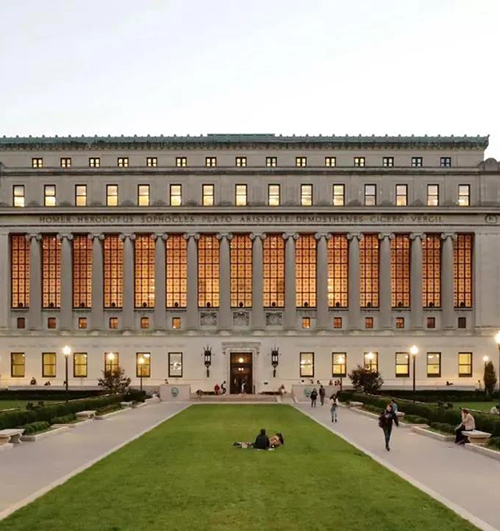启航国际教育(深圳)有限责任公司
手机:151 7345 0166
网址:www.navigatorsedu.com
地址:深圳市龙岗区启迪协信科技园四栋一层115室
港中深分部:香港中文大学深圳乐天楼三层启航教育

Born and raised in an urban village in Shenzhen, I envisioned myself that I would be able to make sense of how modern urban culture and traditional Chinese village culture were intertwined in this city, one of the fastest-growing areas in southern China with half of the land covered by urban villages after the reform and opening-up in 1978. (Urban villages in China refer to the rural villages encircled by urban space.
After leaving the urban village and studying in central Shenzhen, a highly metropolitan area with modern urban culture, I was astonished by the sharp difference between my classmates and me, in spite that we lived in the same city. They spoke Mandarin while I spoke Cantonese, the local language of Shenzhen, which abruptly identified me as a villager while them as urbanites. The living style that the villagers preferred to live in a group reserving local customs of Shenzhen, further separated me from those in central Shenzhen who became increasingly self-dependent. These constant culture shocks between urban villages and the metropolitan Shenzhen admittedly once overwhelmed me; however, the background and experiences of being an urban villager became my most cherished resource, where I ran into sociology, which intrigued me mentally and academically.
With a constant desire to dig into urban villages problems, I picked an elective course Introduction to Sociology during my first year at college, I immediately realized that the research methods in sociology, such as interviews and participant observation, were useful to help me seek the answers to the puzzles about urban villages I was longing to resolve. I then wrote my first sociology paper by leading a series of interviews on a family story of the urban village I have heard over the years, which was related to the Great Escape of the people, including my grandpa and my uncle, from Mainland China flocking to Hong Kong after Communist China came into power in 1949, a period of history that has been buried deep and almost forgotten. The interviews with my grandpa and my uncle turned out to be extremely helpful to trace the history and cultural background of urban villages and to examine the relationship between southern Mainland China and Hong Kong. Moreover, while comparing this paper with other papers on the Great Escape to Hong Kong that I had written based on a documentary videoed by a Mainland China broadcasting company, I also learned how someone’s historical perspective of the same past event could be constructed in various ways by different devices and divergent historical narratives.
However, the more I had exposed myself to this topic, the more urgent I felt that in-depth investigations on Shenzhen urban villages were needed, in particular, on those areas that were marginalized in waves of urbanization of contemporary China. Therefore, taking advantage of being a local observer, I decided to explore the history of urban villages from the perspective of land use in Shenzhen since the land-use issue was the heart of urbanization in China.
During the summer of my second year, I initiated my research based on a case study about the developmental changes of land use in my home village in Shenzhen. This experience allowed me to obtain a completely fresh perspective towards the interaction between urban expansion and the firmly established village culture, which influenced the villager-living spatial patterns of urban villages. On the one hand, I observed a drastic shift in how local villagers utilized their land, from being a farmer to taking full advantage of its potential to generate enormous material gains by constructing numerous unlawful village-houses. This process, considered to be a convoluted issue faced by many urban villages across China, inevitably created difficulties for the subsequent urbanization planning. Meanwhile, I realized that the changes of villager-living spatial patterns of urban villages exerted a noticeable influence on the local customs of the community on which people constructed their self-identities, which eventually resulted in an increasingly high degree of cultural homogeneity due to extensive incorporations between the urban villages and the city.
All these experiences enhanced my belief that my personal experience, together with the stories I had heard about the struggle of the people from urban villages while they were confronting the rapid urbanization, deserved more research and exploration. Therefore, I changed my major to Translation in the School of Humanities and Social Science, the only major available at CUHK(SZ) where I could maximize my opportunity to receive more training in the field. After taking the elective course Gender Matters, I became aware that gender matters in urban villages in China were complicated involving many factors such as migration policies, regional differences in economics, and patriarchy. Then for my project focusing on the notion of ideal motherhood in urban villages in Shenzhen, I independently conducted deep interviews with urban women villagers from different educational, occupational, and socioeconomic backgrounds. From the perspective of intersectionality, I managed to see how the reform and opening-up policy and the combination of modern city culture and Confucian patriarchy culture constructed ideal motherhood in urban villages. The results I obtained suggested that the construction of ideal motherhood in urban villages was correlated to gender, urban-rural gap, class gap, village culture exclusivity, and traditional patriarchal system.
